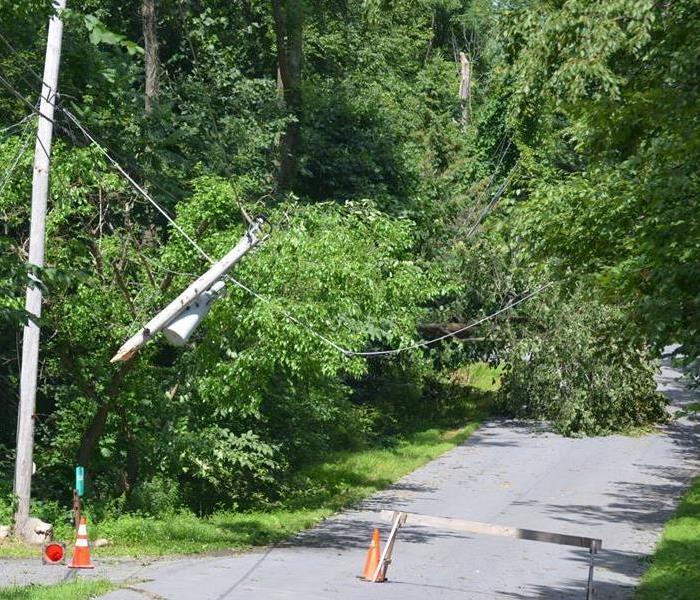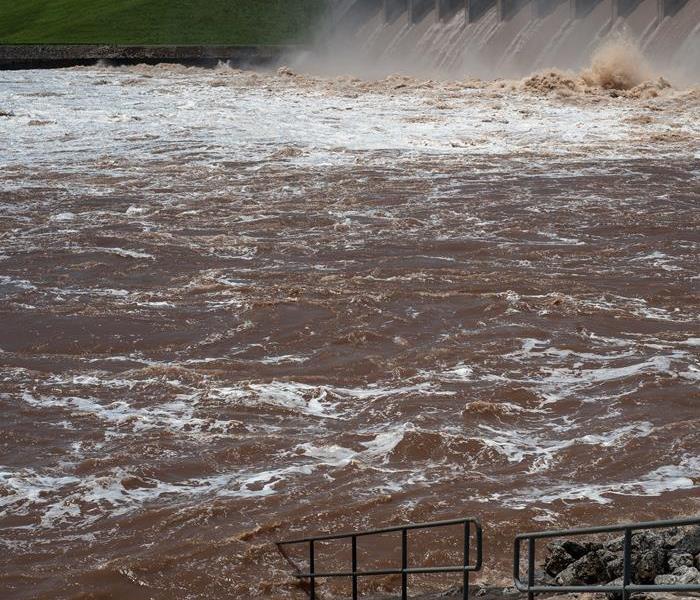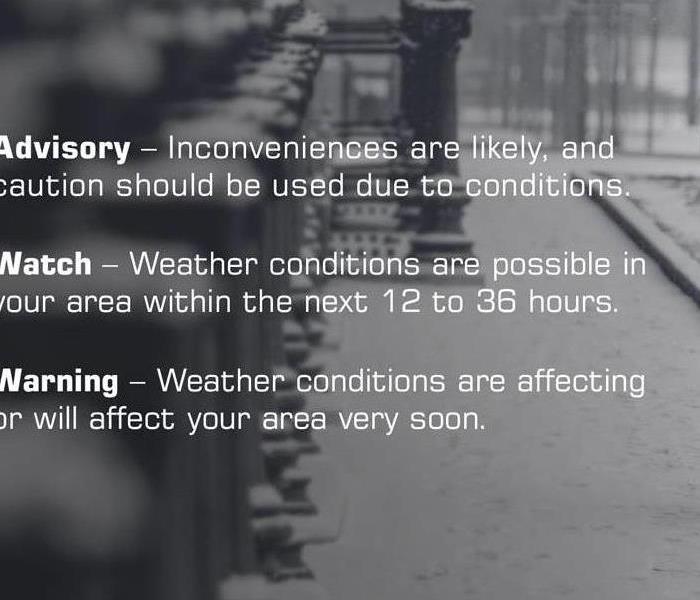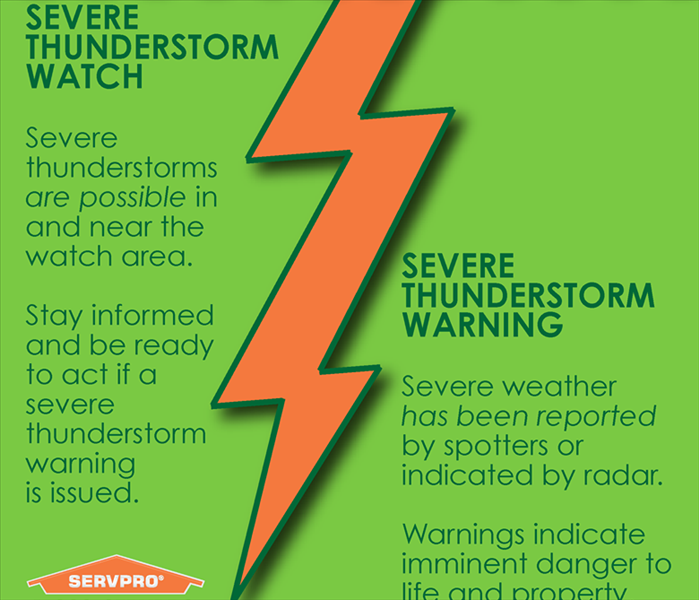Recent Storm Damage Posts
Hurricane season in Hawaii
5/17/2024 (Permalink)
What month does Hawaii have the most hurricanes?
Hurricane season runs June 1 through November 30 every year. The Hawaiian Islands are at most risk for hurricanes and tropical storms from July to September. The last major hurricane to cause historically devastating damage directly to the Hawaiian Islands was Hurricane Iniki in September of 1992. It was a Category 4 storm that resulted in over $3 billion in damage.
Hawaii often gets hit by tropical storms — which are slightly less strong than hurricanes — in the months of August and September.
Where do hurricanes hit the most in Hawaii?
Because Hawaii is made up of islands, most areas are at risk for hurricane and tropical storm damage. The island of Kauai was directly hit by Hurricane Iniki in 1992, and experts predict that nearly 15,000 homes were damaged or destroyed. Oahu also suffered from hurricane damage.
Maui, which is the second largest Hawaiian island, hasn’t been directly hit by a hurricane in over 100 years. That said, tropical storms often bring in rainfall that results in flood and wind damage. Tropical Storm Olivia, for example, directly hit Maui in September 2018 and resulted in heavy rainfall and downed trees.
The Big Island is also at risk for hurricane damage. In August of 2018, Hurricane Lane weakened to a tropical storm by the time it reached Hawaii, but still brought 19 inches of rain to the Big Island, causing major flooding and extensive property damage.
Wind damage often isn't covered under homeowners' insurance policies in Hawaii. That means if you own a home in Hawaii, you may need to purchase additional windstorm insurance coverage to be fully protected against hurricane damage.
IMPORTANT HEALTH INFORMATION
Any time there is a hurricane or heavy rain, stay out of streams, coastal areas, and standing waters that are contaminated by storm water. These may contain bacteria, other pathogens, dangerous chemicals, or other hazards that are not visible.
People affected by hurricanes and other natural disasters may go through a difficult and anxious time. Maintaining mental and emotional health is particularly important. For help with feelings of stress and anxiety, call The Crisis Line of Hawaii 24/7 toll-free at 1-800-753-6879 (or 808-832-3100 on Oahu).
How To Prepare Yourself for Hurricane Season
7/1/2023 (Permalink)
During hurricane season, It can be a nerve-racking time for anyone because they are not at ease. What if the hurricane is forecasted to hit your area? When a home is hit badly with a hurricane, it can leave you homeless, vulnerable and it can shatter lives as well as damage your property. Hurricane can’t be avoided but being prepared can help you and your family to minimize its impact. You don’t need to wait for a hurricane warning to be issued before you take certain precautions.
Being prepared is essential when it comes to dealing with the physical challenges of hurricane not to mention, property damages. Here’s how to prepare yourself for hurricane season and get away with it with less stress.
Plan your evacuation
If you live near the coast, you might be required to evacuate your home. Do not wait for the last minute and make an evacuation plan as soon as possible so you will know where to find shelter, in case you need to leave your home. Always get the latest updates from your local radio and TV or the National Oceanic and Atmospheric Administration (NOAA) Weather Radio. If you have pets at home, find a safe place for them ahead of time. If you want to bring your furry family members with you on your evacuation place, contact the place you want to stay if they can also accommodate your pets.
Prepare nonperishable supplies on hand
Prepare things like candles, lamps, matches, first aid kids, food that you don’t have to cook and prescription drugs. Make them ready and bring them along with you just in case. Make sure to prepare at least 3 days’ supplies of food and drinks. Consider foods that you will no longer need to cook or refrigerate just in case power supply will be cut out.
Check your home
Make sure your home meets the necessary building codes. Check your windows if they are ready to withstand a hurricane. Cut branches and trees that could fall on your house. It might be best to install storm shutters on your windows. You might consider replacing your landscaping materials with shredded bark of trees since these are lighter compared to rocks and gravels; thus, it won’t cause as much damage.
Keep enough cash and fill up your gas tank
It is always ideal to keep cash on hand at all times so you will have something to use during emergency situations. The same thing goes with your car tank. You can’t be sure that gas stations and ATM machines will be accessible during a state of emergency.
Review your insurance coverage
Review your home insurance if it covers hurricane-related emergencies. Most home insurance policies cover your home for damages caused by natural disasters like hurricanes and storms. Check the policy limit and see if it can cover rebuilding your home should the need arise. See also if it covers flood damage especially if you live near the coast.
Being prepared can help you and your family in times of needs and emergencies especially during hurricane season. However, if you do encounter water damage from any weather-related issues, contact SERVPRO of East Honolulu 808-395-9545 for any water restoration needs
SEVERE WEATHER SAFETY GUIDELINES: HOME
3/3/2023 (Permalink)
By following these simple guidelines, you can protect yourself and your family from nature's most violent storm.
The most important things to remember are:
- GET IN - If you are outside, get inside. If you're already inside, get as far into the middle of the building as possible.
- GET DOWN - Get underground if possible. If you cannot, go to the lowest floor possible.
- COVER UP - Flying and falling debris are a storm's number one killer. Use pillows, blankets, coats, helmets, etc to cover up and protect your head and body from flying debris.
HOME
Your plan at home should be known by everyone in the home and practiced at least twice each year. Children who may be at home alone should know what to do and where to go even if no adults are there.
When selecting your shelter area, remember that your goals should be:
- Get as low as possible - completely underground is best.
- Put as many barriers between you and the outside as possible.
It is not the wind inside - it's the flying debris that's in the wind. Items can fly through the air (broken glass, etc) or fall down (could range from small objects to objects the size and weight of cars). A basement is also a good shelter in most cases. If your basement is not totally underground, or has outside doors or windows, stay as far away from them as possible. Items from above could fall into the basement, so it's a good idea to get under a stairwell or a piece of sturdy furniture. If possible, avoid seeking shelter underneath heavy objects on the floor above. Use coverings (pillows, blankets, sleeping bags, coats, etc) and helmets to shield your head and body and to protect yourself from flying debris.
If No Underground or Reinforced Shelter is Available
If you're like most people, you don't have an underground shelter. In this case, you need to find a location that is:
- As close to the ground as possible
- As far inside the building as possible
- Away from doors, windows and outside walls
- In as small a room as possible
Here are Some Ideas
- Bathrooms
Bathrooms MAY be a good shelter, provided they are not along an outside wall and have no windows. Contrary to popular belief, there is nothing magically safe about getting in a bathtub with a mattress. In some cases, this might be a great shelter. However, it depends on where your bathroom is. If your bathroom has windows and is along an outside wall, it's probably not the best shelter.
Bathrooms have proven to be adequate shelters in many cases for a couple of reasons. First, bathrooms are typically small rooms with no windows in the middle of a building. Secondly, it is thought that the plumbing within the walls of a bathroom helps to add some structural strength to the room.
- Closets
A small interior closet might be a shelter. Again, the closet should be as deep inside the building as possible, with no outside walls, doors or windows. Be sure to close the door and cover up.
- Hallways
If a hallway is your shelter area, be sure to shut all doors. Again, the goal is to create as many barriers as possible between you and the flying debris. To be an effective shelter, a hallway should as be far inside the building as possible and should not have any openings to the outside (windows and doors).
- Under Stairs
The space underneath a stairwell could be used as a shelter.
SEVERE WEATHER SAFETY GUIDELINES: ROAD
3/3/2023 (Permalink)
How to handle severe weather situations on the road is detailed below.
Being In a Vehicle
Vehicles - cars, trucks, sport utility vehicles, RVs, 18-wheelers, boats, trains, planes, etc. - are terrible places to be when a severe thunderstorm threatens. Fortunately, these situations can be avoided most of the time by being ALERT to the possibility of severe storms and tornadoes.
All types of vehicles can be blown over, rolled, crushed, lifted or otherwise destroyed by even a weak tornado. People have been hurt or killed when large trees crushed their cars. Below are some safety tips.
- Consider delaying your trip if severe thunderstorms are in the area or along your path of travel.
- Monitor television, radio, NOAA weather radio, and the internet for storm location information.
- Be familiar with the area where you're traveling.
- If you're in your car, find a station broadcasting weather information. Some radio stations will interrupt programming to broadcast warnings and other information. Search for a station with local weather information and listen for details. A battery-operated weather radio is essential for travelers.
- Wind
Severe thunderstorms can produce devastating straight-line winds, as strong, or even stronger than most tornadoes. Any vehicle may be overturned by severe thunderstorm winds. Get off the road, if possible, and find a sturdy building to take shelter in.Severe thunderstorms contain deadly and destructive elements that can threaten your life in your car. - Hail
Severe thunderstorms can produce hail as big as baseballs or softballs. These chunks of ice, falling at over 100 mph from a severe thunderstorm, will break car windshields and dent vehicles bodies. Get off the roadway, if possible, and find shelter underneath an awning, a carwash or other structure. Abandon your vehicle, if possible, and get into a sturdy structure. Do not park underneath highway overpasses or bridges. You could cause a deadly traffic jam, preventing others from reaching safe shelter and blocking emergency vehicles. - Heavy Rain & Flooding
Even non-severe thunderstorms can produce excessive rainfall in a very short period of time that can flood roadways and low water crossings. Avoid areas where water is covering the roads - even familiar ones.
Every situation is different
The worst-case scenario for motorists would be to be trapped in your vehicle on the road with no escape possible. This scenario could occur in more densely populated areas, in metropolitan areas at rush-hour or in high traffic situations, or on limited access roadways, such as interstates or turnpikes, where it might not be possible to quickly exit and find safe shelter. It is in these situations when it may become necessary to leave your vehicle and seek shelter in a ditch, culvert or low spot.
Highway overpasses are NOT tornado shelters, and these should be avoided.
Taking Shelter Outdoors
Ditches, culverts, and ravines should be used only as an absolute last resort. You will be exposed to flying debris, rain and hail, lightning and extreme wind. People have survived by seeking shelter in ditches. If you must leave your vehicle to seek shelter in a ditch, you should try to get as far away from the vehicle, as possible.
Hawaii Hurricane Season
7/8/2022 (Permalink)
As we all know, Hawaii weather is very dynamic and can change for the worse in a very short period. With hurricane season in Hawaii running from June 1 through November 30, proper preparation is important to ensure the safety of you and your family.
The National Weather Service will issue a Hurricane Watch if there is a threat of hurricane conditions within 36 hours. A Hurricane Warning is issued when sustained winds of 74 mph or more are expected in a specified area in 24 hours or less. A Hurricane warning can remain in effect when dangerously high water or high waves continue, even though winds may be less than 74 mph.
In the event of a hurricane, it is recommended to be prepared and assembly your Disaster Supply Kit. Non-perishable food, water, supplies and equipment should be assembled in one central location.
Create a Family Disaster Plan. In case of evacuation, make plans in advance to stay with friends or relatives who live inland or on higher ground. Learn the recommended evacuation routes from your home. Local broadcast stations or authorities will give the safest routes or to learn them ahead of time, contact your local emergency management office. Program important numbers into each family member's cellular phones and make a list of valuable possessions.
When a Hurricane Watch is issued for your area, check your Disaster Supply Kit and replenish anything that may be missing from your kit. Check and restock your supply of water if necessary. Make sure your car has a full tank of gas and is ready to go or if you have made arrangements for a ride, contact that person to reconfirm. Gather emergency papers in your home such as birth and marriage certificates, wills, insurance policies, deeds, etc. Place them in a waterproof container with your non-perishable food supply or put them in your safe deposit box.
For senior citizens, store at least a two-week supply of any medicines you may take. Also, be sure to have an extra pair of eyeglasses as well as extra hearing aid batteries.
If a hurricane is about to strike and you have not reached an emergency shelter, emergency procedures include taping or boarding up windows (or installing storm shutters), stay indoors and away from windows (even secured ones), shut off your main gas valve and the main power switch, and don't use your telephone or vehicles except in an emergency.
Make sure all objects on your lawn or patio are properly secured so that they cannot be picked up and carried away during high winds. Items such as: lawn furniture, garbage cans, garden tools, toys, signs, and other items can be very harmful and become missile-like weapons during high winds.
And lastly, ensuring the safety of all your loved ones also means making sure your pets are safe. Make sure your pets have received all their vaccinations. In case of an evacuation, pet shelters may require proof of vaccinations. Keep a current photograph of your pet as well as a collar with identification and a leash. Have a properly sized pet carrier for each animal. A proper pet carrier should be large enough for your animal to stand and turn around in.
Preparing Your Personal Documents In Case Of A Storm
1/17/2022 (Permalink)
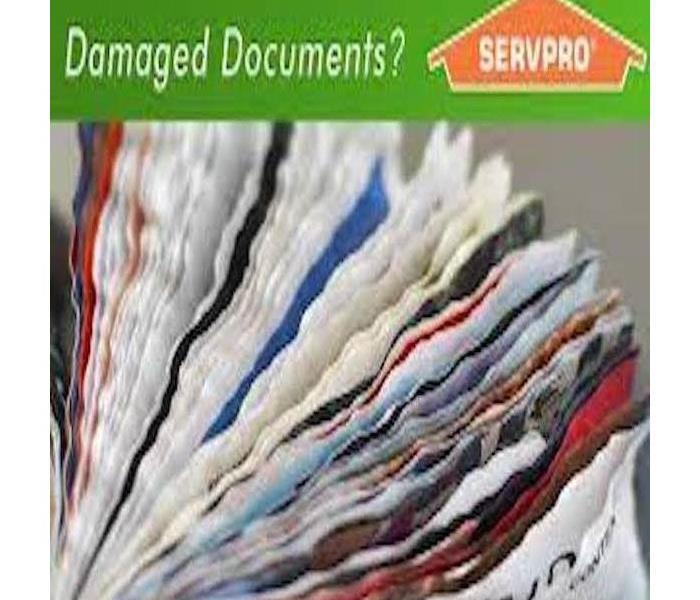 Need document restoration, call SERVPRO of East Honolulu today at 808-395-9545 to see how we can help
Need document restoration, call SERVPRO of East Honolulu today at 808-395-9545 to see how we can help
Hurricanes can be devastating, which is why it’s critical to be prepared, including having a hurricane insurance policy that fits your needs.
If it is hurricane season or you know a hurricane is coming, it is important to store your personal documents in a dry and safe place; always be sure to have electronic copies of your personal items as well as hard copies. Long before a disaster, you should develop a backup plan for making your documents accessible when you need them.
Do I Need Hurricane Insurance and Flood Insurance?
You might be wondering why hurricane insurance and flood insurance are different. To put it simply, hurricane coverage on a homeowner’s insurance policy covers the damage from wind during a “named storm” or hurricane, however, it does not cover water coming into your home from the ground level.
What Documents Should I Protect?
During hurricane prep, people always make sure to put up hurricane shutters, charge electronic devices, and store up enough dry food and water to wait out the storm. The hurricane prep step that often gets forgotten is putting together and safely storing all of your important documents. Taking the time to store your important personal documents (and/or copies) will protect you if the originals are damaged, lost, or destroyed in a hurricane.
Here is a list of important documents that you should make sure to protect during hurricane season:
- Insurance Documents And Policy Numbers.
- Birth Certificates.
- Social Security Cards.
- Driver's Licenses.
- Passports.
- Vehicle Registrations and Titles.
- Property Deeds.
- Medicare or Insurance Cards, Prescription Records, and Contact Information for Your Doctors.
- Financial Records: Tax Records, Bank Statements, Account Numbers.
- Your Will, Estate Planning Paperwork, and Contact Information for Your Executor of Estate.
Where Should I Store My Personal Documents?
Now that you’ve collected your important personal documents, it's time to come up with a plan to keep them safe.
In Your Home Or Business
If you are planning to keep your important documents inside your home or business, there are a few different ways you can store them:
- The best option is to store your personal documents in a portable, fireproof (weatherproof) file system or lockbox that you can take with you in case of evacuation.
- If you do not have access to a weatherproof lockbox, consider storing your documents in a hard, plastic storage container away from any windows.
- Store your documents in a place in your home or business that is likely to be above the potential flood line.
Secure Offsite Storage
If you are planning to store your important documents outside of your home, please note:
- One of the safest ways to assure the integrity of your documents is to store them offsite in a safe deposit box. If you choose the offsite route, make sure to keep adding new documents as you acquire them.
Electronic Storage
One of the best ways to keep records of personal documents is to store them electronically. Of course, there are some documents that cannot solely be stored online, such as birth certificates, passports, and social security cards, but keeping a copy of them can still be beneficial. With your documents in electronic format, you can access them from anywhere. Three ways to electronically store your documents are:
- Saved to your Google Drive or a similar cloud-based document storage platform.
- On a CD or DVD.
- Saved to a Flash Drive.
You can even combine electronic and offsite storage methods by storing electronic copies of your documents on a CD/DVD or flash drive and putting them into a safe deposit box.
How to Make a Hurricane Evacuation Plan for Your Family
1/17/2022 (Permalink)
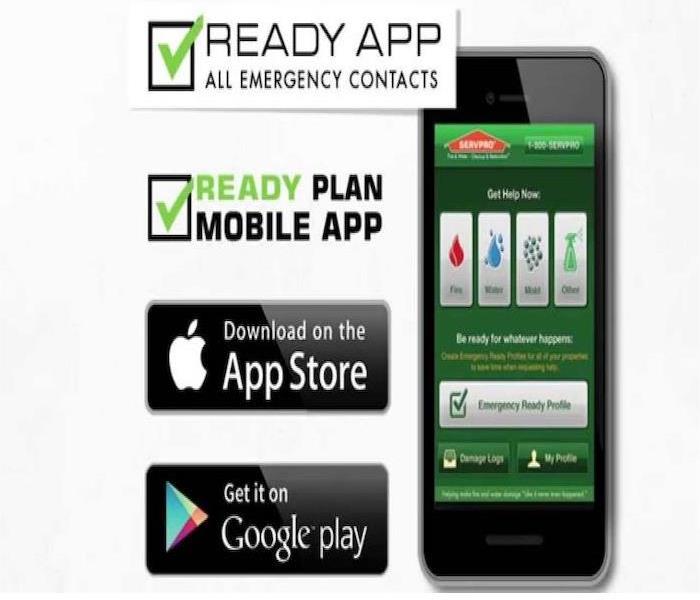 SERVPRO Emergency READY Profile® contains critical facility information to help speed up response time.
SERVPRO Emergency READY Profile® contains critical facility information to help speed up response time.
Prep an Emergency Contacts Sheet
Every family member should have an emergency information sheet that compiles the phone numbers of every other person in the family as well as neighbors and out-of-state friends or relatives who might be the central point of contact.
This list should include:
- Phone numbers and email addresses of every person in the household
- Phone numbers and email addresses of emergency contact friends or family outside of the household
- Contact information for medical providers
- Contact information for veterinary services, should you have pets
- Contact information for where you plan to stay until the storm has passed
The Federal Emergency Management Agency (FEMA) has a handy reference sheet for adding emergency contacts and meeting places in a Family Emergency Communication Plan. Download the PDF from Ready.gov for step-by-step instructions for making one.
Have Your To-Go Bag Ready
When you evacuate, you won’t be leaving empty-handed. You’ll need an emergency bag ready-to-go so you’re not wasting time packing one when time is of the essence.
This should include:
- Enough food and water to last for at least 72 hours
- Clothing for the next 72 hours
- Battery-operated radio, flashlight and lanterns— along with plenty of extra batteries
- Extra keys for your home and car
- Cash to tide you over if banks are closed or ATMs are not working
- Medical supplies, including two weeks' worth of any prescription medication along with over-the-counter remedies you might need
- Important papers and documents like insurance papers, birth certificates, social security cards, etc.
- First aid kit that includes personal hygiene items, plus hand sanitizer and disinfectant
Don't Forget Your Pets
In an emergency, you also want to provide for your four-legged friends. Prepare a pet evacuation kit that contains food, bottled water, food dishes, medications, cat litter and pans, medical records and anything else you might need to keep your pet comfortable for a few days like special medications.
If you evacuate your home, take your pets with you in a carrier or on a leash or harness to prevent them from escaping in fear.
Not all shelters can accommodate pets, so have a backup plan to keep them safe if you cannot care for them.
Establish Emergency Meeting Places
When is imminent, make sure your family can agree on two prime meeting locations:
- Indoors. Choose a small interior, windowless room on the lowest level of your home to congregate with your family. It’s here you can double-check you have all your supplies and evacuate as a unit.
- Outside your neighborhood. Should you or part of your family be out and about when an evacuation order hits and it’s not safe to come home, it’s helpful to agree on one meeting place like a grocery store parking lot, a community center or another friend’s home. The persons who are home should know where everyone’s emergency supplies are and grab preparations for those waiting from a distance.
Why You Should Avoid Driving in a Flood
1/3/2022 (Permalink)
Flooding is prevalent during the winter season in Hawai’i, on virtually all islands have had to combat the incessant raining that has occurred recently. It is easy to get impatient and wish to drive or do more than one’s essential task. But seeing that the East Honolulu like the rest of the island of O’ahu has been hit with hard rains and the omicron strain it might be best to stay inside. Here are a few reasons why you should not drive in the rain:
Danger to You
Flooding is the culmination of storm water that tends to be dangerous and hazardous to society. It is especially dangerous to the driver because it is hard to gauge the depth of flooded roads. Flooded areas are also unpredictable and change with the weather pattern, some floods can rapidly push objects-especially cars. You have no control on the current, therefore your safety.
Damage to the Car
There are certain parts of a car that will not function if they are damp or come in contact with water. Cars are automotive working because of gas, oil, heat, and electricity. Most of these chemicals do not react or like water and manufacturers have to adjust accordingly. Cars are meant to be submerged in water or in water at all. Some vehicles die on the spot if there is too much water in the system. Avoid these realities by staying in.
Lack of Vision, is a danger to everyone
Flooded areas often paint a misleading picture, because it is hard to gauge the depth of puddles. There could be debris floating inside, or other sinister objects that could not only affect your car but also the safety of the organisms within your car.
It is inevitable, because life continues when it rains hard, because flooding happens. Life moves on and we adapt with it. SERVPRO of East Honolulu is here to clean up the pieces after tropical storms, or bad rainy weather for your properties. Keep your ohana safe by practicing diligence and necessity when leaving after heavy rains.
So It Stormed, What's Next?
12/3/2021 (Permalink)
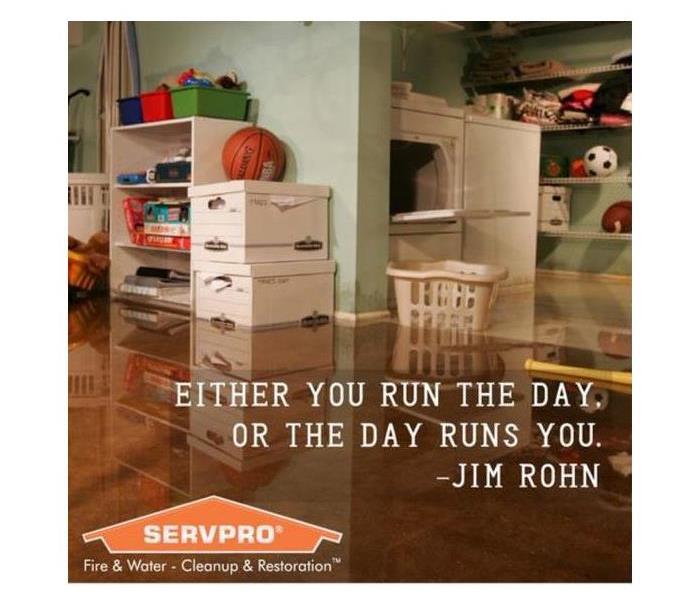 YOU DECIDE!! CALL NOW 808-395-9545
YOU DECIDE!! CALL NOW 808-395-9545
It is not an usual occurrence for it to be raining on Oahu, you may hear: “it is always raining somewhere on the island”.
Tourists and locals alike know that rain and storms make all the difference, our rains go from misting, to plopping buckets of rain in seconds. This is heightened during a storm.
And it is important to us that the East Honolulu community is safe all throughout the duration of a storm. SERVPRO of East Honolulu is always here to help clean up from the aftermath of a storm; here are some tips for you after a storm hits:
- Watch your animals, animals are easily riled after a storm
- Do not drive on flooded roads, highways, and other paved areas for vehicles
- Stray away from inept power lines, and if not marked off, report them to the authorities
- Stay vigilant by keeping up to date through TV newscasts, Radio stations, Twitter...etc. Knowing inaccessible areas helps you navigate through the storm aftermath.
- It is good to help people who need extra help like our kupuna and keikis.
Learning our Eastern Honolulu area is also a great way to be prepared for storms. When natural disasters arise knowing where you fall within the natural terrain helps one plan on which highway to take if others are down. If it is easier to take the Pali or H1 when H3 is down, or flooding happens before your home exit. It is better to be over prepared than under.
Leave us with any comments or concerns at (808)395-9545. We are proud to be apart of the Eastern Honolulu community, serving you all days of the week. And available for any comments or concerns 24/7.
Getting Through Power Outages Caused by Storms in East Honolulu
8/28/2021 (Permalink)
It is hurricane season in the beautiful Hawaiian Isle, but what does that mean for its inhabitants? With the ever increasing rise of hurricanes- which will not cease until November; it has been a tumultuous time for some of us in the East Honolulu area.
The power has been faulty, leaving some of our community members with no electricity for hours upon hours. Here on the island of O’ahu we have a little more protection as hurricanes naturally gravitate to the Big Island of Hawai’i sparing us of some of the more dangerous winds. Most recently, this has not been the case as the last two tropical storms stayed clear of our oldest sister’s path: Mauna Kea who resides on the Big Island.
Especially with the ever-changing issue of climate pollution and its effects there may be heightened feelings of anxiety with the cool breezes in the air.
Because it is flash flooding season, where Hawaiian roads become rivers, and the mountains become raucous, understanding your options as a conscious consumer while the electricity is out becomes imperative for a safe space for your workers, ohana, and properties alike.
Electricity is one of the most important common conventions in this modern day, used for virtually every step of our day to day routine. It may be frustrating and nerve racking to experience power outages, as power provides for us with air conditioning, enables us to keep perishable food for a longer period of time, and with the ease of phones halts communication when out.
Here are some tips to follow when power outages do arise:
Tropical storms, depressions, and hurricanes alike do not come unannounced. With the advances in technology we are able to track most activities in the Pacific Ocean; especially those in our near vicinity. It is important to prepare for the event of an emergency when one initially gets the hurricane warnings. One of the ways to preserve communication with the rest of the East Honolulu community is to preserve your battery on one’s cell phone whilst trouble occurs. This way when the power is out, and there is no way to charge your devices. There is “juice” in your phone allowing you to contact who you need to, and get consistent updates from the local authorities.
Another preventative method is to write down the names, addresses, and phone numbers of important services/people when the electricity goes out. That would be the nearest hospital, the nearest police station, the nearest hurricane shelter accessible to the public, or family members who may not be as prepared as you.
Another great preventative practice is to consistently be stocked in the event you can’t leave your house for 48 hours. The government of Hawai’i recommends all of its citizens to be stocked in case of an event for at least 48 hours, non-perishables like spam, crackers, or granola bars are great food to store whilst in hurricane season.
It is equally important to have “back-up” methods in storing perishable food and medications that also must be refrigerated. Consider having a bag of ice consistently in your possessions in case of emergency. Especially for family members who are diabetic on important medication that must be stored in a cool place.
Whilst the power is out it is a great asset to have is a generator that can keep your house running smoothly. Generators are a great way to keep your family safe and your house functional while natural abnormalities occur. Just as important is to understand the science behind generators, because they emit high gases of carbon monoxide it is important to keep the generator in a well ventilated place. Which is not the garage or within the home. Also, it is important to note the preservation of power when using a generator. While the generator is running only keep the most important appliances plugged in so there is no energy being used for unnecessary things.
A lot of our community in the East Honolulu area have solar panels, the same principles of the generator- besides the byproduct of carbon monoxide, can be applied to using the energy stored in the solar battery cells.
If you don’t have a generator or solar panels remember to use the fridge and freezer as minimally as possible, keeping the cool air inside the non-working appliance is imperative. Additionally, gas stoves continue to work while the power is out, but should not be used to heat your home. As it also releases carbon monoxide dangerous to all organic organisms.
And while you are keeping your ohana safe, SERVPRO of East Honolulu is here in the event your house stands wayward after the storm. We kokua for our community, and pride ourselves in the knowledge of restoration as well as remediation especially after natural disasters. Our technicians understand water damage to a property like the back of their hand as it is the biggest issue residents of East Honolulu face. Call us with any questions, comments, or concerns at (808) 796-0443.
Storm Damage is No Joking Matter in Hawai’i
7/5/2021 (Permalink)
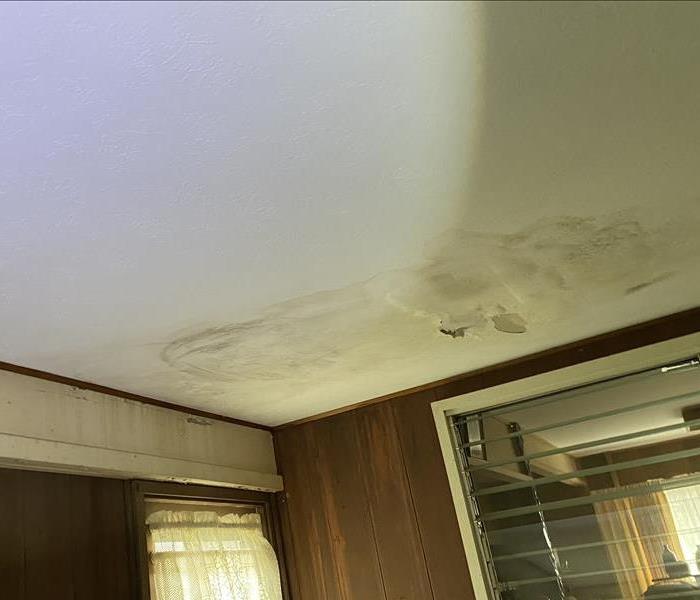 Water damage from storms may not be preventable; keeping your ohana and workers safe is, and after the storm SERVPRO of East Honolulu helps.
Water damage from storms may not be preventable; keeping your ohana and workers safe is, and after the storm SERVPRO of East Honolulu helps.
Tropical cyclones also known as hurricanes are the most deadliest natural disasters to exist. They also cause the most damage, and living on the beautiful island of Oahu it is also more expensive to take care of those damages.
In 2020 alone, the US experienced $22 billion worth of storm damage. That is the six consecutive years in which the US citizens paid 10 or more billion dollars, this number is only expected to increase due to global warming. Here in Hawaii, hurricane season is a very expensive time for those of us who are in areas more prone to hurricanes. Thankfully, East Honolulu is a more dryer terrain nonetheless our customers and community should be prepared for hurricane season.
Our technicians have seen many disasters especially due to storms, most of them damaging the roof.
Americans have to deal with over 10,000 severe thunderstorms each year, which lead to very expensive damages. Because of how long hurricane season is in Hawaii, it is important to know the natural terrain of where you live. Because there are so many different climates located in the many islands; regularly checking the weather forecast, obtaining a NOAA weather radio, and understanding where emergency alerts come from can only make your experience with hurricane damage better. Although, it is very rare for a hurricane to make it on land it is just as important to know where your shelter plan is and have it curtailed to you and your family or business. This should include all types of hazardous scenarios.
We all have aunties, uncles, cousins, friends, and family who live near us. We are so thankful to have a rich community in Hawaii, which means it is very important to share and be an example when it comes to natural disasters and crises. When you create a storm plan, or understand the storm protocols of Hawaii better; share it with your friends and family to make sure everyone you know is also safe and secure.
Although we don’t know when the storm crisis will hit, it is important to be prepared. It is better safe than sorry. And even if disaster strikes, SERVPRO of East Honolulu is here to help and make your property better. "Like it never even happened."
Call us at (808) 395-9545, our line is available 24/7 for an emergency situation.
9 ESSENTIAL PRACTICES TO STORM-PROOF YOUR HOME
6/4/2021 (Permalink)
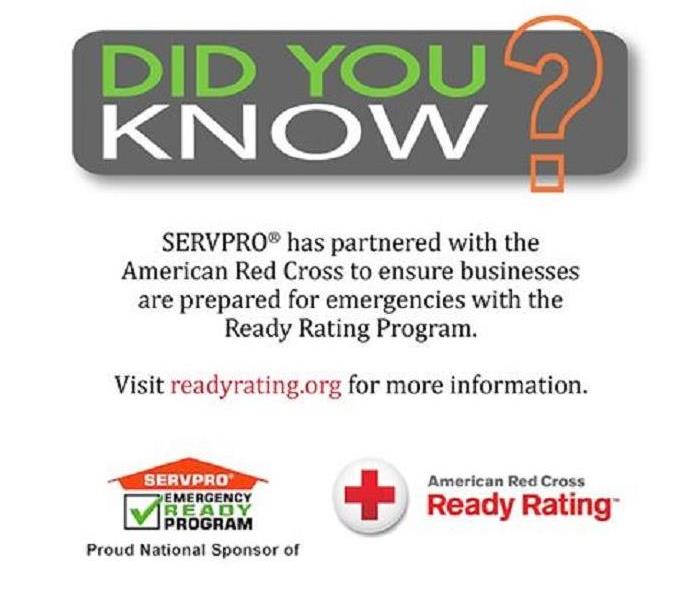 BE PREPARED AND STORMPROOF YOUR HOME
BE PREPARED AND STORMPROOF YOUR HOME
If you live in a place that experiences frequent storms, you understand how destructive they can be for both homes and businesses. There are steps you can take to protect your property from even the harshest weather.
1. SEAL WINDOWS AND DOORS
Sealant on windows and doors can wear due to age and the sun. Before storm season, be sure to check the seals around all windows and doors. Checking your seals is a smart thing to do every season. This is because properly sealed windows and doors are more efficient and will save you money on your energy bill.
2. SEAL AND PROTECT YOUR ROOF
One of the most vital steps to stormproof your home is securing and sealing your roof. Roof damage can lead to a whole array of additional problems such as water damage, mold and pest infestations. The roof deck lies under your roof and above your living space. Waterproofing the roof deck will add security and help ensure that water doesn’t damage inside of your home.
3. STRAP YOUR ROOF
If you live in a place with high winds, tornadoes and/or hurricanes, then you might want to consider roof strapping. Roof strapping is a process that attaches the home’s roof to the walls with metal straps. This keeps your roof connected to your home on all sides, rather than having it simply sit on top of your house.
4. SEAL ANY HOLES
Sometimes homes have cables or furnaces that attach to the exterior of the home. If this is the case, you should check to make sure the areas of connection are securely sealed. You can easily seal the holes with caulk. This will keep water from getting inside your home and foundation.
5. CHECK AND SECURE POSTS
If your home has posts connected to a porch, deck, or carport, then you will want to give them some attention when storm-proofing your home. These extra sections of your home can rip a hole in your house if a strong enough storm decides to sweep through. To prevent this, check all the posts to ensure they are firmly attached to the ground.
6. CLEAR THE YARD
If a storm is coming, one of the best things to do to protect your house is to clear everything from outside. Things like patio furniture, potted plants, and even trampolines can be swept up by strong winds and damage your siding or windows.
7. CHECK YOUR GARAGE DOOR
One thing a lot of homeowners forget to do when storm-proofing is to check the security of their garage doors. This is important because garage doors are lightweight and one of the most common victims of a harsh storm. They can blow in and then rip a hole in your ceiling or front of your garage.
8. CHECK YOUR HOME INSURANCE
Before storm season hits, take time to review your home insurance policy to make sure you’re covered. You’ll want to be sure the policy covers the full cost of rebuilding your home if it is lost in a storm.
9. ADD FLOOD INSURANCE
When reviewing your home insurance policies, we recommend adding flood insurance if you don’t have it already. Many policies only cover damage from the storm, such as a hurricane, but not the flooding that occurs afterward.
BE PREPARED AND STORMPROOF YOUR HOME
The impact of a natural disaster can be devastating. Luckily, taking these nine precautions can help save your home and your life. Whether it’s a tornado, hurricane, or fire, you should also be prepared with knowing who to turn to for recovery and repairs. At SERVPRO of East Honolulu, we offer quality disaster recovery, damage control, reconstruction, and remediation you can trust.
Different types of Storm Damage
4/16/2021 (Permalink)
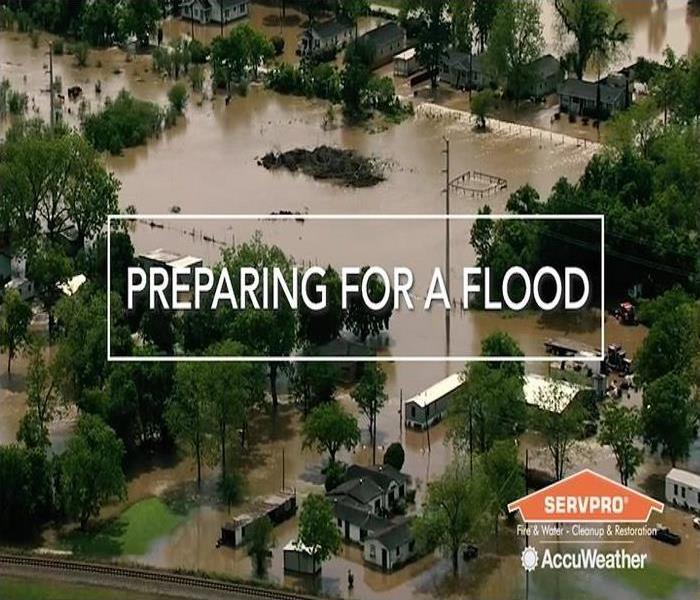 Water or Flood Damage?
Call Today – (808) 395-9545
Water or Flood Damage?
Call Today – (808) 395-9545
When your home or commercial property has water damage from flooding or leaks, we have the expertise and equipment to properly restore your property. Our experience and scientific approach to water removal and water cleanup enable us to properly dry and restore your property.
Water or Flood Damage?
Call Today – (808) 395-9545
Every water damage event is a little different and requires a unique solution, but the general process stays the same. You can click on any of the steps below to learn more about that process.
Restoration Depends on Water Type
Specific steps must be taken to reduce property destruction, depending on the type of water damage. According to the Institute of Inspection Cleaning and Restoration Certification (IICRC), who sets the standards for the cleaning industry and water damage restoration training, there are three levels or types of water involved in damages. They include:
Category 1: Clean water
This water damage is from sanitary sources, such as an overflowing sink or tub, burst water pipes, failed supply lines to appliances, drinking fountains, or vertical falling rainwater.
Category 2: Grey water
This water is from sources that could make you uncomfortable or ill if ingested. Washing machine, dishwasher, or urine-tainted toilet overflows belong in this category.
Category 3: Black water
This is the worst classification of water and could cause severe illness if ingested. Sewer backups, flooded rivers, feces-tainted toilet overflows, or stagnant liquid that has bacterial growth are all examples of black water.
Let SERVPRO of East Honolulu Save Your Home and Belongings
Seeping water damage is progressive, pervasive and can mean valuable objects or keepsakes may become permanently damaged. The professionals you find at SERVPRO are trained on how to handle the various types of water damage. Once they arrive on the scene at a home or business, they quickly assess the situation and start the restoration process in these three areas:
- Aggressive cleaning: Wall cavities and other surfaces are pressure washed with a detergent solution. Salvageable materials are flushed and thoroughly disinfected.
- Moisture detection: Not all water damage is visible to the naked eye. Water trapped in structural cavities may require sophisticated detection equipment to mitigate odors, prevent mold growth and minimize structural damage.
- Rapid structural drying: Mold begins growing on soggy surfaces within only 24 to 48 hours. Rapid drying, all the way down to the building’s substructure, is necessary to restore pre-flood conditions.
After your home floods, you may think your home and its contents are beyond hope, but many of your furnishings and belongings can be restored. With professional restoration help, your flooded home can be cleaned up, dried out, rebuilt, and reoccupied sooner than you think.
Storm Tips for East Honolulu
11/20/2020 (Permalink)
Storms coming,
Here are some quick tips to prevent water damage:
- Repair/replace roof shillings or tiles as needed
- Apply a waterproofing coating to the interior or exterior basement walls
- Create a slope away from the structure to drain runoff properly
- Make sure garden areas have adequate drainage
- Be sure soffit vents are clean and unobstructed
- Check for any cracks or peeling paint
- Fill low spots around building foundation
with clean fill dirt
- Keep downspouts cleat of any blockages
- Clean and inspect gutters regularly
Heavy rains and strong winds can all cause problems with your property. Roofs, gutters, and landscapes are exterior elements that should be checked to guard against water damage. Remember to look in attics, basements or crawl spaces for visible signs of water intrusion. Make sure outside vents are clear of any obstruction to ensure proper airflow.
If you find a problem and need restoration help or want spring cleaning assistance, call your local SERVPRO of East Honolulu professionals. We are on call 24 hours a day, 365 days a year.
(808) 395- 9545
The Dangers of Flood Water
11/15/2020 (Permalink)
Nature can be unforgiving at times, and when it is, we at SERVPRO of East Honolulu are here to help. We have seen all types of water damage, yet one of the worst types is due to storm damage.
There are a variation of types of water categories in regards to the cleanliness of the water/source. Flood water can be a category 3 which is the worst category. Meaning that it can possess extremely dirty water and harmful foreign objects including but not limited to blood borne pathogens or other diseases.
Here are some commonalities in most flood waters that have been in some we dealt with:
- human and livestock waste
- household, industrial, or medical waste
- ash waste that can contain toxic chemicals
- objects such as debris, or metal
- wild or stray animals
These type of containment can create a foul odor, and are extremely dangerous if not instantly dealt with. Due to the high chance of harmful bacteria inside flood water, letting it stand still without cleaning it can cause an increase of bacteria. This type of bacteria can be harmful and cause adverse side effects.
Make sure that you stay away from the flood water, whether you have to drive through it or it is in your home. You never know what is in flood water as there can also be electrical or chemical problems inside of the water as well.
Some types of flood water can cause health issues if one is exposed to it like,
- wound infections
- skin rash
- tetanus
- stomach problems
If you are touching/ cleaning up flood water, first call professionals like us. Here at SERVPRO of East Honolulu we have an able and equipped team that is frequently tested in case of exposure to health issues and can clean up any natural disaster.
But if you do come into contact with flood water make sure,
- you wash the area that has been touched with soap and CLEAN water. Soap is a tame basic solution which if used correctly can be very effective. That is, by washing for at least 45 seconds. Since soap attracts dirt-like particles the longer you clean the area the safer you're skin becomes.
- if there are wounds or punctures that occurred because of the flood water immediately seek medical attention. No one has any idea what type of concoction that can be within the flood water, and due to the increased risk of illness inside the water. It is best to seek medical emergency as soon as you feel like you have been injured.
- If you are trying to restore your soft goods and materials, make sure that you used an increased amount of laundry detergent, hot water, and a slight amount of bleach. Wash these items more than once, again flood water can be extremely gross.
-prevent wounds and injuries by not attempting to go into the water if you can not see the bottom of the floor. That means there are so many contaminates in the water that you can't see your floor. This is dangerous, you have no idea where you're stepping or what lurks underneath the water. There could be a chance of foreign objects that are harmful and pointy, because of the hindrance of the contaminants in the water you will not know.
If you have any questions, refer to the CDC guidelines and health cautions of flood water. As always we only wish the best for our community in all regards but especially in health and safety. If you or a loved one are experiencing flood water issues please call us at
(808) 395-9545
Advice for Warm-Weather Thunderstorms | SERVPRO® of East Honolulu
8/12/2020 (Permalink)
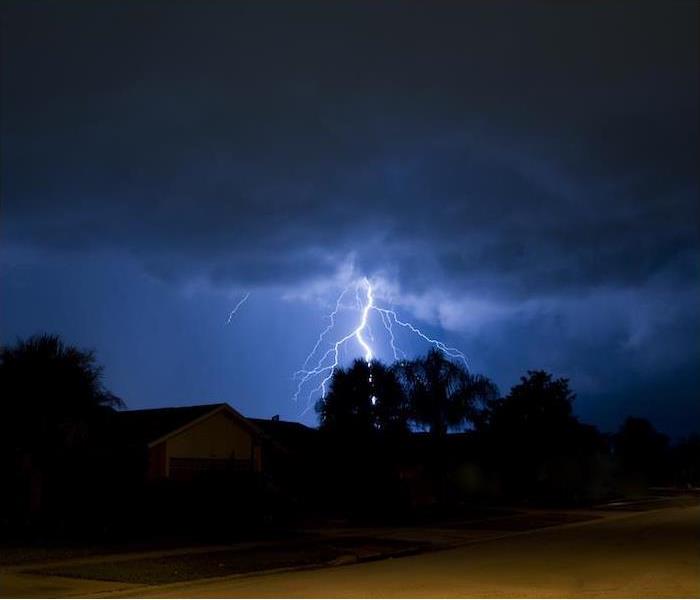 If your home sustains damage due to a storm, you can count on us to help. Contact us at any hour to learn more about our storm restoration process.
If your home sustains damage due to a storm, you can count on us to help. Contact us at any hour to learn more about our storm restoration process.
Because storms need moisture to form, the humidity of summer always gives rise to regular, brief showers. However, these can also turn into more severe thunderstorms rather quickly, which can lead to damage from high winds, lightning and hail.
Since these storms feel routine, they are often ignored, but knowing how to stay safe from a storm anywhere you go can help protect you.
<h3safe-from-summer-storms-anywhere-you-go">Stay Safe From Summer Storms Anywhere You Go
Know your options for shelter. If you are at home and know that a storm is possible for the area, it is best to stay inside and wait it out in case things become severe. However, if a sudden storm catches you out and about, it is also important to know what to do then. Hard-topped cars can be a good shelter, provided you are able to park safely and cut off the engine, as the metal of the car will disburse lightning strikes without doing harm to passengers.
Practice electrical safety. As lightning strikes a building, it routes itself down the path of least resistance in order to reach the balancing charge of the ground—which often means it runs through a home’s electrical wiring system to do so. This can cause a power surge, which is when the charge overwhelms the system and runs through the outlets to anything plugged in. Running everything through your home and office through surge protectors is a great first step, but if you know a storm is coming, you can also unplug everything to be extra safe.
Avoid direct contact with concrete. Did you know that concrete structures have been found to conduct electricity? While concrete itself does not carry a charge, it is often reinforced with metals that can be impacted by a lightning strike and transfer this energy to the surrounding concrete. If a thunderstorm is nearby, avoid touching any concrete walls or floors directly.
Stay indoors for at least 30 minutes. When sudden summer storms interrupt your plans, as soon as the sky clears you will want to get back outside—but since lightning has a 25-mile strike range, going outside prematurely can actually put you in harm’s way. When thunder claps, start a 30-minute timer before heading outdoors, and reset it every time you hear another rumble to be safe.
If your home sustains damage due to a storm, you can count on us to help. Contact us at any hour to learn more about our storm restoration process.
Storm Watches vs. Warnings
6/18/2020 (Permalink)
It’s a good time to review the difference between tornado and severe thunderstorm watches and warnings.
A WATCH means that the potential exists for severe thunderstorms to develop. A storm watch does not mean that one has been seen, it just means that conditions are favorable for one to develop.
Conditions are conducive for the development of severe weather. When watches are issued there is no immediate action for you to take, but do keep up to date on the current weather situation.
WARNINGS on the other hand need to be taken seriously and demand action. A severe thunderstorm warning indicated that severe weather is imminent in your area or already happening. Severe refers to wind gusts exceeding 58 mph and hail greater than 1” in diameter.
With this knowledge of watches and warnings, you will be better prepared the next time severe weather threatens your area.
Lucky We Have SERVPRO East Honolulu
6/3/2020 (Permalink)
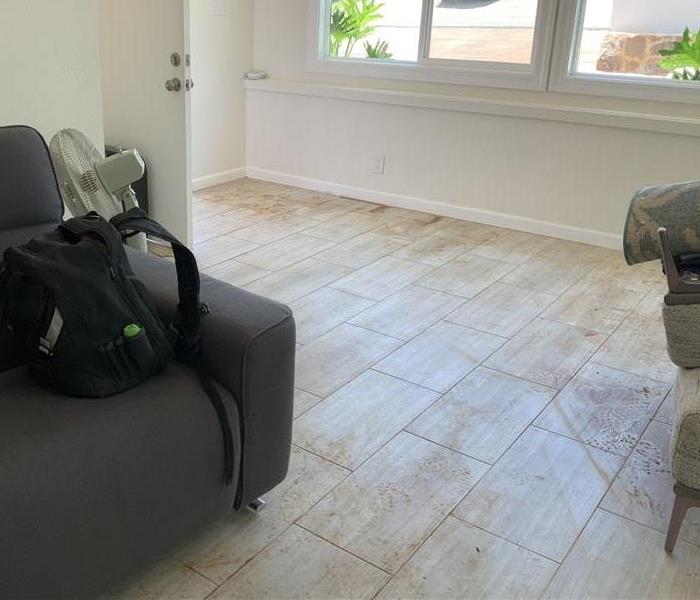 Images of the red dirt disaster
Images of the red dirt disaster
One of the most common sayings in Hawaii: "Lucky We Live in Hawaii", is true.
But, sometimes it does rain in paradise. Just like what happened in the beautiful area of Kaimuki.
Before the state of Hawaii offered $50 to anyone who would move to Kaimuki, it was a huge hill of red dirt. Just like today, it was hot and hilly; there is beauty in Kaimuki. Yet, sometimes the breath is taken out of you literally! Because when it rains it pours!
A resident of the beautiful Kaimuki experienced heavy flooding due to a storm. This caused red dirt to rush into her property affecting not only the floors but also the dry wall. The living room, washer room, and kitchen were heavily affected and extremely dirty from the natural red dirt of Kaimuki.
It took our team of SERVPRO East Honolulu a total of three days from initial profiling to drying and repairing the house back to new.
Using our tried and true 6-Step Process to clean up water damage, we were able to swiftly access the damage and re-create the standards before the storm.
Although, there is calm after the storm... there is also dirt! We of SERVPRO East Honolulu take care of it so you don't have to worry. Because, yes there will sometimes be mess in paradise but we'll be there to take care of it.
Prioritizing Your Safety Following a Flood
4/11/2020 (Permalink)
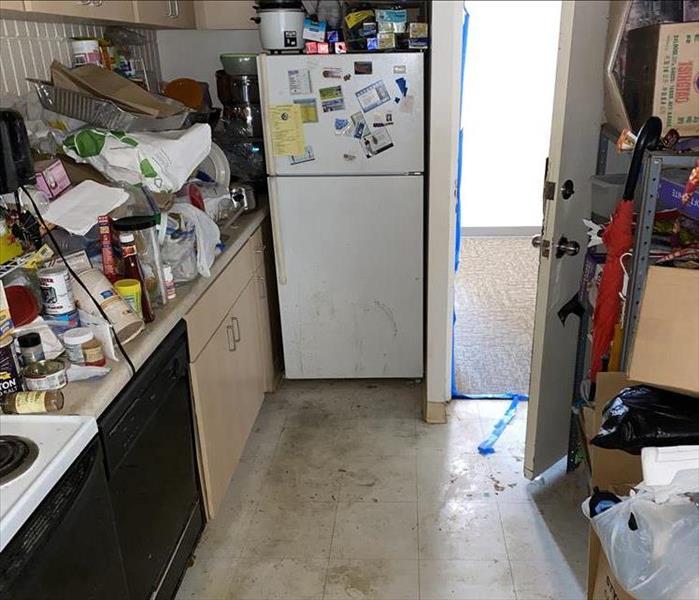 If your home has been damaged in a flood, we are here for you 24/7. Call us to receive a quick response and set the restoration process in motion
If your home has been damaged in a flood, we are here for you 24/7. Call us to receive a quick response and set the restoration process in motion
Having your household damaged during a flood can be a frightening experience, and for many homeowners, one that makes them want to take action immediately.
While dealing with flood damage quickly is generally advised, it is only best practice if it is safe to do so. There are many dangers afoot after a flood comes through an area, and it is important to prioritize your own safety as you work to recover.
Ways That You Can Prioritize Your Safety Following a FloodAvoid further safety hazards. It is understandable that homeowners will be ready to return home as quickly as possible to start handling the damage, but it is vital to wait for emergency officials to declare it safe to do so.. Floodwaters can allow many dangers to lurk out of sight, including contaminants and electrical hazards that officials will need to address before residents can return.
Air out the home. If all the severe weather has dissipated from the area, opening your doors and windows can help your home air out following a flood. While mold will begin to grow rapidly after water damage is introduced to the home, introducing air flow can stunt its growth and prevent further issues from arising. If the floodwaters have been trapped in the home for several days without airflow, it may be wise to open windows and return later to begin the cleanup to avoid breathing in any dangerous fumes.
Document the damages. It is a common reaction to walk in and begin cleaning up your household right away, but it is always advised to take thorough photographs before you do so. Flood coverage is generally an extra policy that homeowners must purchase, but even if you do not have coverage, there may be a possibility that you can file for some of the damages in the aftermath with evidence.
Contact your restoration and insurance companies right away. Getting in touch with relevant parties after a flood can expedite the recovery process dramatically. Contacting your insurance will help you determine if you are eligible to file a claim for any of the damages, and getting in touch with your restoration company will allow your recovery process to begin in earnest. The longer water damage is untreated, the worse it can become, so acting quickly is imperative.
How Weatherproofing a Home Can Reduce Storm Damage | SERVPRO® of East Honolulu
4/4/2020 (Permalink)
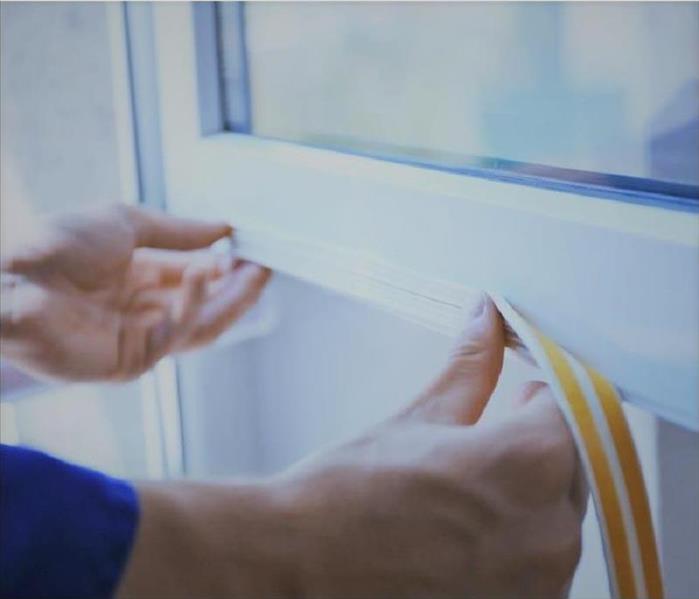 Weather proofing your home
Weather proofing your home
Houses are designed to be fortresses against weather, but in cases of severe storms, their protections often falter. Nearly half of all home insurance claims involve damage related to weather, so it is common for homeowners to wonder what they can do to prevent damage from happening to them.
While any storm carries the potential for damage regardless of how prepared a person is, by taking measures to weatherproof your home, you will be much less likely to sustain any damages during severe weather.
How to Weatherproof Your Home From Storm DamageKeep Your Shingles in Shape
Leaky roofs can happen due to a variety of things, but severe weather almost certainly will worsen one. By doing regular check-ins with your roof, you can inspect it for any signs of leaks and stop the problem before it becomes severe. Look for missing or peeling shingles and other signs of wear that might point to a weak point where water can enter.
Beat the Weather With Weatherstripping
Weatherstripping is such an effective measure that even Energy.gov suggests it for homeowners due to how much it can save on electricity costs and cut down on leaks inside the home. Buying inexpensive weatherstripping and installing it around your home’s openings is a simple weekend project that can do wonders toward sealing your home from the outside elements.
Gut Debris From Your Gutters
A clogged gutter is more than just a nuisance—it can cause serious damage to your home, especially when heavy rains come along. It is recommended to clean gutters at least every six months to prevent debris buildup. In between, watch for signs the gutter is clogged, such as water spilling over the sides during rain, downspouts that do not deposit water and any pools of water around the house.
Pick the Right Paint
Choosing your home’s paint is about more than just color with all the new product developments now on the market. Paints feature extra protections such as waterproofing and UV resistance now to help your home withstand severe weather for longer before needing to be repainted. If your paint is peeling or bubbling, a fresh coat with a more resistant paint might be wise.
If you have issues with storm damage to your home, we are always here to help. Contact us 24 hours a day for a rapid response.
Emergency Preparedness 101: What to keep in your emergency kit
12/28/2019 (Permalink)
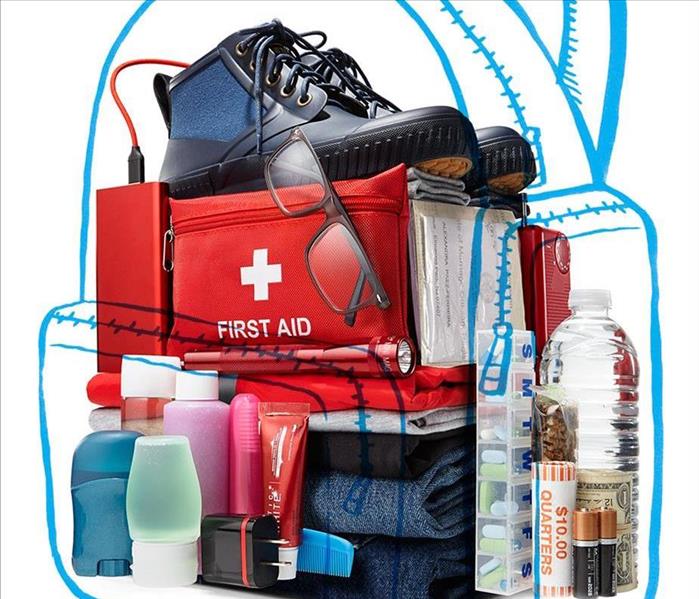 For more information on emergency preparedness, visit Ready.gov or the American Red Cross.
For more information on emergency preparedness, visit Ready.gov or the American Red Cross.
When it comes to family safety and home security, top-of-mind concerns usually involve crime or household accidents. However, environmental factors force millions of people to evacuate their homes or shelter in place every year. An emergency kit, also known as a survival kit, is the cornerstone of emergency preparedness for these situations. Assemble a well-thought out emergency kit, either in your home or in a travel-friendly “go bag”, to help you stay safe and sound.
While some locations face greater environmental risks than others, dangerous weather can strike anywhere. In 2018, the Federal Emergency Management Agency (FEMA) recorded 124 emergency declarations, which included fires, storms, flooding, high winds, mudslides, tornadoes, earthquakes and even volcanic eruptions. These events and related emergencies often result in the loss of electricity, water, heat, phone lines or other utilities. They may also prevent you from traveling, so plan accordingly using this list.
Emergency kit basics
Your basic preparedness kit should include everyday staples like water, food, essential toiletries, batteries and backup communication devices. The following recommendations are intended to last through relatively minor emergencies until your power can be restored or emergency personnel can reach you.
- Water: The Department of Homeland Security recommends at least one gallon of water per person per day for at least three days, for drinking and sanitation.
- Food: Assemble a three-day supply (or more) of nonperishable food items. Keep food in a cool, dry place with basic cutlery, including a can opener, easily accessible. If you’re sticking to the basics, choose food items that don’t need much preparation or heating. Some suggestions: granola or protein bars, peanut butter, jerky, nuts, cereal, dried fruit and canned items like legumes, fruit and tuna.
- Family first aid kit: At minimum, your first aid kit should include treatments for minor injuries (bumps, scrapes, cuts, burns, etc.) as well as general purpose over-the-counter medications like pain relievers, cold medicine, anti-diarrheal medicines (Immodium, Pepto-Bismol) and hydrocortisone cream. Create your own from scratch or opt for a preassembled kit. This all-purpose first aid kit represents a good value and includes plenty of kid-friendly items like junior band-aids and topical pain relief. No matter which kit you choose, you should always review its contents and supplement it with items that are relevant for your family. For instance, you might need allergy medicine like Benadryl or epinephrine pens or additional NSAIDs for chronic aches and pains.
- Medical items & prescriptions: The first aid kit prepares you to respond to new injuries and conditions, but anyone in your household with pre-existing conditions should also have a 7-day emergency supply of prescriptions and/or medical devices.
- Toiletries and sanitation items: Prioritize toiletries that you can use without water, especially if you rely on an electric water pump. Moist towelettes/wet wipes with plenty of sealable trash bags are good all-around use items. If you have an infant, baby supplies (diapers, rash cream, etc.) are of utmost importance. Also consider hand sanitizer, feminine hygiene products and toilet paper.
- Glasses and/or additional contact lenses with solution: Coping with an emergency is particularly difficult if your vision is compromised. Make sure to have backup glasses, contacts and contact solution if you have issues with your eyesight.
- Lighting: flashlight, lanterns, candles: Flashlights and camping lanterns are excellent options, as long as you include an ample supply of batteries. Hand-crank flashlights are an even better choice because they don’t require batteries at all. Energizer makes some of the best rated mini versions; this Thorfire flashlight is another great option, with features like solar power, waterproofing and various light settings.
If you stock up on candles, be sure to include matches or lighters, and use them extremely judiciously. Open flames present safety issues of their own. Use tip-proof, heat-proof candle holders and never burn a candle unattended. - Backup cell phone chargers/battery: Cellular networks often remain up and running even when electricity is spotty. If you can keep your device charged, you can preserve a connection to the outside world. Car chargers can be useful in a pinch, as long as you have the resources to start and run your car. Backup battery packs are reliable, but keep in mind that they usually recharge your device only 1-3 times, depending on the pack size and the type of phone you have.
- Battery-powered or hand-crank radio: Though radios might seem old-fashioned, they’re the best tool for staying up-to-date on emergency broadcasts during a time of need. AM/FM radios are better than nothing, but they may not provide the best information during hazardous weather. Look for an emergency radio that supports NOAA weather radio. These types of receivers tune into specific public safety radio frequencies that broadcast comprehensive governmental weather news and alerts.
- Multipurpose tool or tool kit: A multi-tool or a small toolkit will help you respond to the environment. At the very least, keep a wrench and/or pliers on hand to turn off natural gas and damaged water valves. Hammer, nails, plywood, tarps and rope may be necessary to re-secure doors and windows. Plastic sheeting and duct tape are also handy reinforcements if the structure of your home is compromised.
- Pet supplies: Don’t forget your furry family members in your planning. Stock up on extra food, bedding and important medications.
- Whistle, maps and compass: Many security authorities recommend packing a high-decibel whistle into your emergency kit in case you need to signal for help. Local maps and a compass can also be lifesavers if you need to travel without your go-to GPS device.
- Emergency blankets or sleeping bags: During an emergency, you or your family members may need to recover from dangerous weather exposure. Heat-retaining household safe or in a waterproof bag or portfolio within your emergency kit.
Advanced survival kit items
There are several possible reasons to increase your level of emergency preparedness, many of them personal. Some people prefer to keep an elevated level of independence and preparation because they live in an isolated setting. Others just want maximum peace of mind. To increase your preparedness level from covering basic needs for a few days to enhancing your comfort and readiness for an extended period of time, start with the items listed above and expand on them as your priorities and resources allow. In some cases, “more” is simply better – more food, more water, more tools. In other cases, consider additional strategic investments in the following items.
- Water filtration: Disease-causing bacteria and other organisms may lurk in seemingly innocuous water, and natural disasters can cause these pathogens to multiply. If you don’t have a way to boil water to sanitize it, emergency water filtration can make non-potable water safe to drink. Make sure to use filters specifically designed for untreated water. Most kitchen water filters are simply meant to make already-drinkable water taste better, not to sanitize it. Water filtration systems meant for the outdoors are more appropriate for emergency prep.
- Generator and fuel: Backup electric generators are available in a variety of sizes, price points and run times. Many people consider quiet, low-capacity inverter generators sufficient for emergency prep in smaller households. Larger portable generators have greater wattage loads and run time, while standby generators are the type that automatically kick on when you lose power, keeping your home (or a significant portion of it) up and running without disruption. All generators require fuel (propane or natural gas) and the greater its size, the more installation and safety concerns it presents. Do your research carefully, matching your wattage needs with your requisite appliances. Amazon has a great guide to get you started.
- Cooking supplies: In an emergency, a hot meal goes a long way. Look for a survival cooking kit that includes a safe heating element or fuel. Many of these emergency stoves work well with either solid emergency kindling or canned liquid fuel. Butane camping stoves and self-heating cooking bags are also an option. Proceed cautiously: cooking flames are dangerous, especially in enclosed spaces. A fire extinguisher makes an excellent addition to your emergency kitchen.
- Comforts (clothing, towels, games, activities): Pleasant diversions can be hard to come by during long-lasting emergencies. Paper, pencils, books, crosswords, puzzles and other games go a long way in keeping spirits up. Cozy clothing, towels and additional bedding are other comfort measures that may make the difference between feeling hopeless and staying positive.
Damages Flooding Can Cause | SERVPRO® of East Honolulu
11/30/2019 (Permalink)
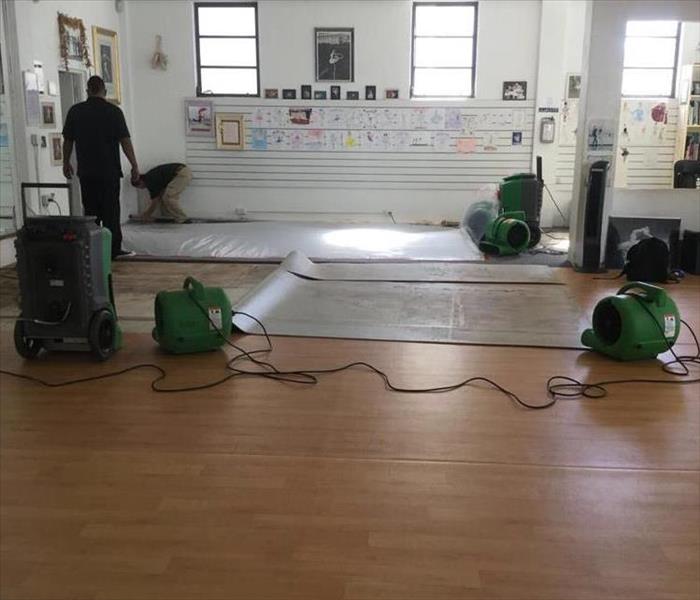 Drying of business dance studio after a storm caused water to burst through its doors
Drying of business dance studio after a storm caused water to burst through its doors
While thinking of flooding is not pleasant, it is something that all homeowners should consider due to how common it has become in recent years.
There are many causes of flooding as well as many damages a flood can cause. To give you an idea of the most common damages to be aware of, we have put together this guide so you can be better prepared.
Flooding and Its Damage to HomesFoundational Damage. The ground underneath a home can become waterlogged during a flood, causing unnatural and unprecedented shifting and swelling. This can alter a home’s foundational stability, resulting in structural issues such as cracked walls or ceilings.
Drywall Damage and Mold. While some drywall is in clear need of replacing, not all drywall impacted by a flood will be crumbling and clearly damaged. However, because drywall is such a hotspot for mold after it becomes soaked, it may still have to be replaced even if it looks physically sound.
Insulation Saturation. While some specialty insulations will not be affected by water damage, the majority of the types in today’s houses can become extremely saturated with water and must be replaced after a flood.
Temporary Frame Swelling. The framing of a home is traditionally made out of lumber, meaning it will not always have to be replaced following a flood. While the wood may swell initially, it will usually settle after it dries and remains structurally stable. However, always work with a professional to ensure it is treated for mold.
Appliance Ruining. The appliances that contain insulation such as ovens and refrigerators will generally have to be replaced after a flood, as this insulation can absorb flood water. However, other appliances that are not insulated may be OK to use—just check with a professional to ensure the electrical safety first.
Furniture Damage. Because of how much water upholstered furniture can absorb, it often requires replacement following a flood because of contamination and mold. However, furniture made of other materials may be salvageable after a thorough cleaning, such as metal and wood pieces.
If your home has been affected by a flood, we’ll be here to help you! Give us a call 24⁄7 to learn about our certified flood restoration process.
Levels of Water damage caused by storm
7/26/2019 (Permalink)
When we receive a call to help with flood damage, we can never be sure how severe the damage is until we arrive on-scene to evaluate the situation. Different levels and volumes of flood waters can turn into drastically different damage cleanup and restoration processes, so we must be flexible and able to accommodate any scenario in a timely manner. We look for these following signs of damage to determine how extensive the problem is.
Standing Water
A consistent indicator of some of the most severe flood damage is the presence of standing water. When water remains in your home at a measurable depth, it can begin to cause expensive and permanent damages to the structure of the building. Alert us if any standing water remains in the building so that our primary response teams can bring water extraction pumps and respond Faster To Any Size Disaster.
Soaked Walls
We expect flooring materials to be soaked as a result of flood damage, but when the walls of your home have sustained significant damage, this may be a sign of additional problems that require a more thorough investigation to identify. Sometimes, when water reaches a substantial depth and later recedes, it can still create pockets of moisture in the walls of your home that degrade materials and can cause mold issues later on. SERVPRO technicians use advanced moisture detection tools such as infrared imaging devices and hygrometers to identify these wet areas and treat them accordingly.
Exterior Damages
Although the exterior of your home may be much more resistant to the effects of flood damage than interior areas, it can still sustain significant damage during a storm. We can help with repairs and restorations that may be necessary to leave the exterior of your home looking "Like it never even happened."
SERVPRO of East Honolulu can help you recover from flood damage. Call us 24/7 at 808-395-9545.
ACT QUICKLY DURING A STORM
7/19/2019 (Permalink)
Watching the news can fill you with dread as the weather threatens the integrity of your home. As you prepare for a possible emergency, knowing who to call when extensive areas are being affected is extremely important. Experience and technical knowledge are your greatest assets in combating the effects of flooding in your home.
When there is the threat of flood damage to our home make sure to contact SERVPRO of East Honolulu as soon as possible. Our crew is ready 24 hours a day, 7 days a week and trained to work when disaster strikes. Being among the first to contact our technicians helps mitigate your losses as well as the disruption to your daily life. Making a call to our team is the first crucial step in restoring your home.
Flood waters bring debris and unwanted organisms into the sanctity of your home. Our SERVPRO team is IICRC-certified to handle the toughest emergencies.. For tough jobs, we use both submersible and truck-mounted pumps to extract unwanted water from your home. Our field experience and preparation allow us to dispose of wastewater while respecting local ordinances appropriately. Local regulations also play a role in the removal and disposal of contents that cannot be salvaged.
Once we can extract all the water from your home, we proceed with drying and disinfecting. Keeping in mind the nature of each surface, we can tailor each cleaning agent to address its specific needs. Our SERVPRO technicians closely monitor all aspects of the process to ensure no further threat of bacteria remains in your home.
Do not let flood damage overwhelm you. Call SERVPRO of East Honolulu 808-395-9545 as soon as possible to help restore your property. With our help, your home will look “Like it never even happened.”
Hurricane Season in Procress
9/3/2018 (Permalink)
Hurricanes are massive storm systems that form over warm ocean waters and move toward land. Potential threats from hurricanes include powerful winds, heavy rainfall, storm surges, coastal and inland flooding, rip currents, tornadoes, and landslides. The Atlantic hurricane season runs from June 1 to November 30. The Pacific hurricane season runs May 15 to November 30. Hurricanes:
- Can happen along any U.S. coast or in any territory in the Atlantic or Pacific oceans.
- Can affect areas more than 100 miles inland.
- Are most active in September.
IF YOU ARE UNDER A HURRICANE WARNING, FIND SAFE SHELTER RIGHT AWAY
- Determine how best to protect yourself from high winds and flooding.
- Evacuate if told to do so.
- Take refuge in a designated storm shelter, or an interior room for high winds.
- Listen for emergency information and alerts.
- Only use generators outdoors and away from windows.
- Turn Around, Don’t Drown! Do not walk, swim, or drive through flood waters.
Prepare NOW
- Know your area’s risk of hurricanes.
- Sign up for your community’s warning system. The Emergency Alert System (EAS) and National Oceanic and Atmospheric Administration (NOAA) Weather Radio also provide emergency alerts.
- If you are at risk for flash flooding, watch for warning signs such as heavy rain.
- Practice going to a safe shelter for high winds, such as a FEMA safe room or ICC 500 storm shelter. The next best protection is a small, interior, windowless room in a sturdy building on the lowest level that is not subject to flooding.
- Based on your location and community plans, make your own plans for evacuation or sheltering in place.
- Become familiar with your evacuation zone, the evacuation route, and shelter locations.
- Gather needed supplies for at least three days. Keep in mind each person’s specific needs, including medication. Don’t forget the needs of pets.
- Keep important documents in a safe place or create password-protected digital copies.
- Protect your property. Declutter drains and gutters. Install check valves in plumbing to prevent backups. Consider hurricane shutters. Review insurance policies.
What to do 6-36 hours before a hurricane hits
9/3/2018 (Permalink)
When a hurricane is 36 hours from arriving
- Turn on your TV or radio in order to get the latest weather updates and emergency instructions.
- Restock your emergency preparedness kit. Include food and water sufficient for at least three days, medications, a flashlight, batteries, cash, and first aid supplies.
- Plan how to communicate with family members if you lose power. For example, you can call, text, email or use social media. Remember that during disasters, sending text messages is usually reliable and faster than making phone calls because phone lines are often overloaded.
- Review your evacuation zone, evacuation route and shelter locations. Plan with your family. You may have to leave quickly so plan ahead.
- Keep your car in good working condition, and keep the gas tank full; stock your vehicle with emergency supplies and a change of clothes.
When a hurricane is 18-36 hours from arriving
- Bookmark your city or county website for quick access to storm updates and emergency instructions.
- Bring loose, lightweight objects inside that could become projectiles in high winds (e.g., patio furniture, garbage cans); anchor objects that would be unsafe to bring inside (e.g., propane tanks); and trim or remove trees close enough to fall on the building.
- Cover all of your home’s windows. Permanent storm shutters offer the best protection for windows. A second option is to board up windows with 5/8” exterior grade or marine plywood, cut to fit and ready to install.
When a hurricane is 6-18 hours from arriving
- Turn on your TV/radio, or check your city/county website every 30 minutes in order to get the latest weather updates and emergency instructions.
- Charge your cell phone now so you will have a full battery in case you lose power.
When a hurricane is 6 hours from arriving
- If you’re not in an area that is recommended for evacuation, plan to stay at home or where you are and let friends and family know where you are.
- Close storm shutters, and stay away from windows. Flying glass from broken windows could injure you.
- Turn your refrigerator or freezer to the coldest setting and open only when necessary. If you lose power, food will last longer. Keep a thermometer in the refrigerator to be able to check the food temperature when the power is restored.
- Turn on your TV/radio, or check your city/county website every 30 minutes in order to get the latest weather updates and emergency instructions.
Storm Prevention Tips
4/13/2018 (Permalink)
Prior to a storm
Remove trees or branches dry during a storm that could fall and cause casualties or damage.
Stay inside the building another 30 minutes after you last hear thunder.
Rules to follow if a storm is imminent
Stop all outdoor activities.
Enter the building or a car. Close windows and doors.
Pipelines can produce electricity. Use wireless phones only in emergency situations. Cordless phones or cell phones are safe to use.
Unplug appliances and other electrical equipment such as computers and air condition. When you feel your hair stand up, is an indication that there is a lightning danger. Sit you squat down. Put your hands on your ears and your head between your knees.
Avoid high objects such as a high tree isolated area open fields, beaches or a boat on the water, any metal objects such as agricultural machinery, farm equipment, motorcycles, bicycles, etc.
If you're in the woods, look for shelter in an area with less tall trees.
If you are in an open area, go to a low area such as a valley.
Difference between WARNING & WATCH
4/13/2018 (Permalink)
A WATCH means that the potential exists for the development of severe thunderstorms or tornadoes, depending upon the specific type of watch issued. In the case of a tornado watch, this DOES NOT mean that a tornado has been seen or even indicated on radar...it just means that conditions are favorable for the formation of tornadoes in thunderstorms. Similarly, a severe thunderstorm watch means that conditions are just conducive for the development of severe weather, and DOES NOT indicate that severe weather has been reported. While no immediate action on the part of the general public is required for the issuance of a watch, citizens should keep up to date on the current weather situation and be prepared to seek shelter if necessary.
A WARNING, on the other hand, requires more immediate action and should be taken seriously. A severe thunderstorm warning indicates that severe weather is imminent in your area or is already occurring (based on either human observation or doppler radar). The term severe refers to hail greater than or equal to 1.00" in diameter and/or wind gusts that meet or exceed 58 mph. Although these storms can also be associated with dangerous cloud to ground lightning or heavy rainfall that is capable of causing flash flooding, neither of these two items serve as criteria for a severe thunderstorm warning being issued.
Hurricane Season in Hawaii
6/1/2017 (Permalink)
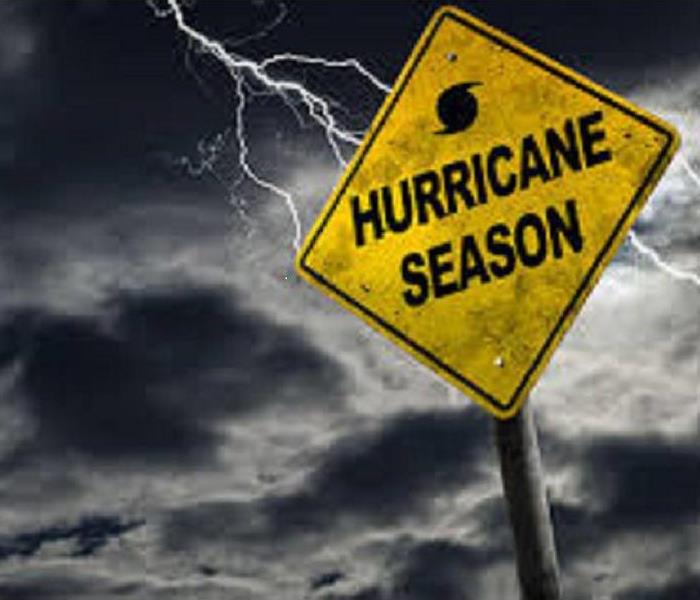 Hawaii Hurricane Season 6/1/17 - 11/30/2017
Hawaii Hurricane Season 6/1/17 - 11/30/2017
Hurricanes
Hurricanes are part of a family of storms known as Tropical Cyclones that are very large and produce three life-threatening effects:
- High winds in excess of 74 mph
- Storm surges that can exceed 40 feet
- Heavy rains that will exceed flash flood conditions
The National Weather Service Central Pacific Hurricane Center will issue watches and warnings for tropical cyclones.
- Watch: Prepare your disaster supply kit & prepare to evacuate
- Warning: Evacuate and take protective shelter; take your disaster supply kit
Should I evacuate? Where should I go?
Each person should decide whether to evacuate or not. You can either stay at home and shelter in place, or go to a hurricane evacuation shelter.
How to determine if you should shelter-in-place (at home) or evacuate (to a hurricane evacuation shelter):
- If you live near the coastline, near rivers and streambeds, or on the mountain ridgeline, YOU SHOULD EVACUATE.
- If your house was built before 1993 and is constructed of wood, YOU SHOULD EVACUATE
- If you live in a house constructed after 1993 and have an interior room on a lower floor, with no windows (closet, bathroom) you should shelter-in-place
Shelter-in-place:
- If you meet the above criteria you should consider sheltering-in-place from the storm
- Stay on the lowest floor possible, and look for a closet, bathroom, or other room with no windows on the interior of your house or apartment
- Bring your food, pets, family, and preparedness supplies into the room and remain in there
- Take your radio with you so you know when conditions have improved enough for you to leave your sheltering room
Click on the link below for a list of hurricane evacuation shelters, including special health needs shelters and pet friendly shelters.
https://www.honolulu.gov/rep/site/dem/dem_docs/hurricane_list/2013_Hurr_Evac_Shelters.pdf
HURRICANE SEASON also mean possible storm damage to your home or business. Be sure to call SERVPRO OF EAST HONOLULU 808-395-9545 in case of any type of damage. We are here at your convenience Working to make it "Like it never even happened."
Family Disaster Plan
4/26/2017 (Permalink)
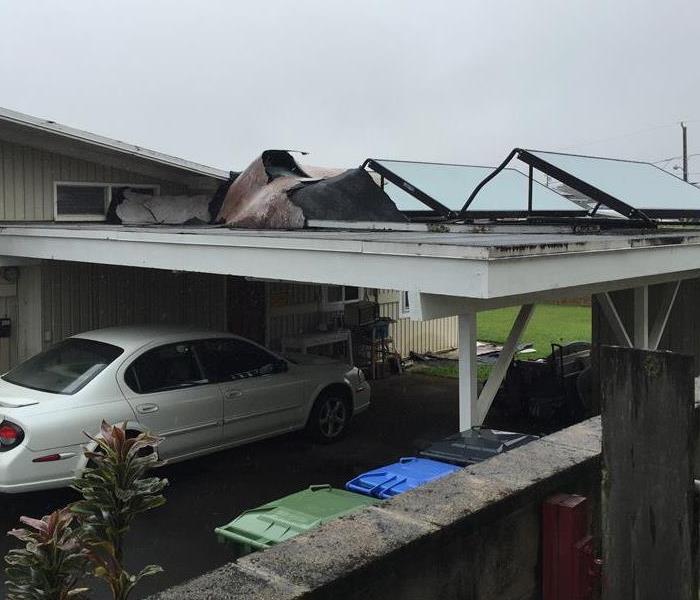 SERVPRO of East Honolulu rushed to restore a nearly dismembered roof after heavy rain and wind made its way through a home in Honolulu, HI
SERVPRO of East Honolulu rushed to restore a nearly dismembered roof after heavy rain and wind made its way through a home in Honolulu, HI
Every family should have a plan for disaster situations. Sit down before the storm and be prepared when it's time.
Family Disaster Plan
Discuss the type of hazards that could affect your family. Know your home's vulnerability to storm surge, flooding and wind.
Locate a safe room or the safest areas in your home for each hurricane hazard. In certain circumstances the safest areas may not be your home but within your community.
Determine escape routes from your home and places to meet.
If possible, have an out-of-state or neighbor island friend as a family contact, so all your family members have a single point of contact.
Make a plan now for what to do with your pets if you need to evacuate.
Post emergency telephone numbers by your phones and make sure your children know how and when to call 911.
Check your insurance coverage - flood damage is not usually covered by homeowners insurance.
Stock non-perishable emergency supplies and a Disaster Supply Kit.
Use a NOAA weather radio. Remember to replace its battery every 6 months, as you do with your smoke detectors.
Take First Aid, CPR and disaster preparedness classes.
SEVERE WEATHER ALERTS
3/4/2017 (Permalink)
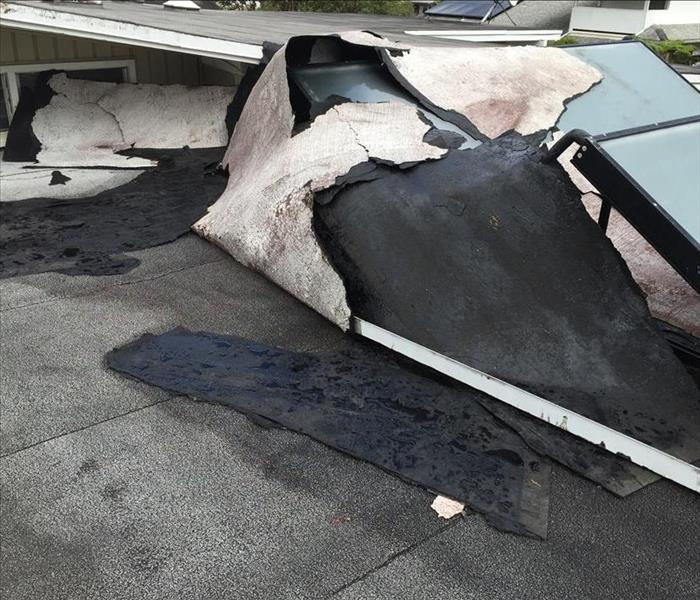 Roof damage in the Honolulu area caused by heavy showers and thunderstorms
Roof damage in the Honolulu area caused by heavy showers and thunderstorms
What is a Severe Thunderstorm? A thunderstorm that produces a tornado, winds of at least 58 mph (50 knots), and/or hail at least ¾" in diameter. Structural wind damage may imply the occurrence of a severe thunderstorm. A thunderstorm wind equal to or greater than 40 mph (35 knots) and/or hail of at least ½" is defined as approaching severe.
Severe Thunderstorm Watch This is issued by the National Weather Service when conditions are favorable for the development of severe thunderstorms in and close to the watch area. The size of the watch can vary depending on the weather situation. They are usually issued for a duration of 4 to 8 hours. They are normally issued well in advance of the actual occurrence of severe weather. During the watch, people should review safety rules and be prepared to move a place of safety if threatening weather approaches.
Severe Thunderstorm Warning This is issued when either a severe thunderstorm is indicated by the WSR-88D radar or a spotter reports a thunderstorm producing hail 3/4 inch or larger in diameter and/or winds equal or exceed 58 miles an hour; therefore, people in the affected area should seek safe shelter immediately. Severe thunderstorms can produce tornadoes with little or no advance warning. Lightning frequency is not a criteria for issuing a severe thunderstorm warning. They are usually issued for a duration of one hour. They can be issued without a Severe Thunderstorm Watch being already in effect.
Severe Weather Potential Statement This statement is designed to alert the public and state/local agencies to the potential for severe weather up to 24 hours in advance. It is issued by the local National Weather Service office.
Severe Weather Statement A National Weather Service product which provides follow up information on severe weather conditions (severe thunderstorm or tornadoes) which have occurred or are currently occurring
Flash Flood Warning
2/11/2017 (Permalink)
BE PREPARED!
Flooding happens during heavy rains, when rivers overflow, when ocean waves come onshore, when snow melts too fast, or when dams or levees break. This is the most common natural-weather event. Flooding may be only a few inches of water or it may cover a house to the rooftop. Floods that happen very quickly are called flash floods.
Some disasters strike without any warning. Have you thought about those supplies you’ll need the most? They will usually be the hardest to come by. Enlist your children to help gather supplies for your family’s emergency kit. It’ll bring you a sense of relief, and your kids a feeling of empowerment. Make sure you have enough supplies to last for at least three days. Think about where you live and your needs. Consider having a large kit at home, and smaller portable kit in the car or your workplace.
Click here for an emergency kit checklist file:///L:/FEMA_checklist_parent_508_071513.pdf
What a storm is and is not
1/6/2017 (Permalink)
What Storm is:
A controlled response managed by one or more SERVPRO® Storm Sites which are operated by one of four Franchise owned teams. These Storm Sites are committed to being in a constant state of readiness. Always answering the call and mobilizing to service National Accounts clients’ customers. Always willing to assist the Local Franchises in servicing spikes in volume for which they have difficulty getting to all customers in a timely fashion.
What Storm is not:
Storm is not a severity initiative, so it is not LLRT or ERT response. However, commercial or large losses often occur in a Storm affected area. When they do the Storm Leaders work with CLLD and the LLRT or ERT Franchises to respond to opportunities and manage the work produced.
Storm Response is managed in six phases:
- Promote and Plan
- Monitor the Potential Event
- Activate the Event
- Execute the Event
- Exit the Event
- Post Event






 24/7 Emergency Service
24/7 Emergency Service



